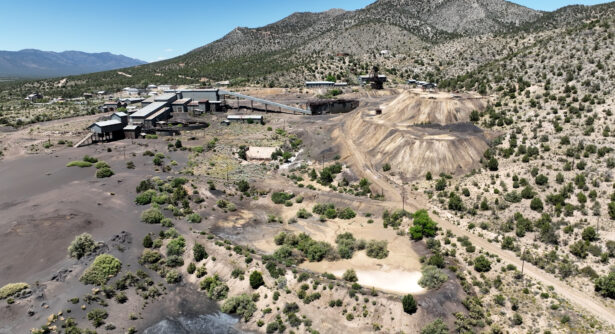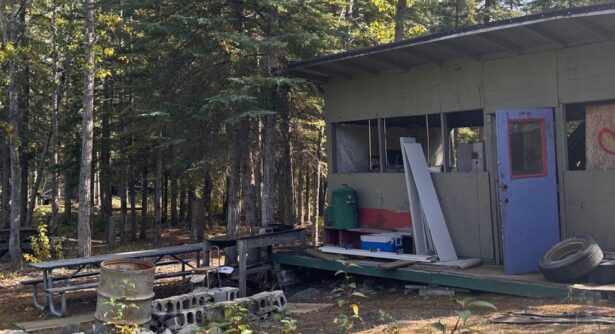
“The ultimate form of land recycling”: A Conversation About Landfill Redevelopment with Langan’s Jeff Ludlow
In the blog post that follows, we’re highlighting one of CCLR’s sponsors.
I remember taking yard waste to the Santa Clara landfill as a teenager, something you would obviously compost today…landfill redevelopment is the ultimate form of land recycling, because it gives us an opportunity to finally recycle all that trash we couldn’t recycle decades ago. – Jeff Ludlow, Principal at Langan
At CCLR, we’ve been hearing a great deal of interest lately about landfills. This sparked our April workshop in San Jose, CA, where Jeff Ludlow, Principal at Langan Engineering, gave two presentations about landfill post-closure redevelopment. Other communities have reached out with questions about capping landfills or the feasibility of building on landfills. Landfills pose unique challenges, but they also offer powerful opportunities for redevelopment.
Recently, I sat down with Jeff to talk in greater detail about his work on landfills.
CCLR: Jeff, we say that we throw things “away,” but perhaps more than other people, you have a sense that “away” doesn’t really exist – thanks to landfill redevelopment, “away” is quickly becoming a place where we might one day want to live, work or play. Tell us a little about your background and your experience with landfill redevelopment.
JEFF: I’ve been in this business for 32 years, 20 of them with Langan. I’ve always worked with companies that have multidisciplinary approaches to the environmental engineering projects that I run. That’s the approach that landfill redevelopment demands, and that background is one reason why I was naturally led to work on landfill post-closure redevelopment projects. At Langan, our other area of focus is brownfields and urban infill redevelopment. As you know, developable urban land is at a premium, and so landfills present valuable opportunities for growth.
CCLR: How difficult is landfill redevelopment, compared to other large, complex post-industrial brownfields you’ve encountered?
JEFF: Landfills involve environmental, geotechnical and civil engineering challenges, because along with explosive landfill gas, settlement occurs not on the order of inches but of feet, and so engineering has to design for building foundations, utilities and a landfill cap in ways that accommodate that. One unique factor with landfill redevelopment is remediation. Whereas an industrial site may have point source contamination, like a tank or pit, landfills are typically not “remediated”. Rather, you mitigate exposure, because the source of contamination in a landfill can be very uncertain, and trying to remediate refuse can be extraordinarily complicated and economically infeasible.
CCLR: You’ve been in this business for a long time. What kinds of trends are you seeing in landfill redevelopment?
JEFF: Landfill redevelopment is opportunistic by nature – developers don’t necessarily seek out landfill sites, but when they’re available and the market is right, developers will take the opportunity to pursue them.
Regulations in California generally seem to be increasing. There has also been a trend in end uses. Parks were a popular use early on, then offices and hotels, and more recently mixed use developments. From a technical side, we continue to advance the science of building foundations that are more amenable to landfill post-closure development, and new techniques for landfill gas mitigation, so there has certainly been progress on the engineering and technical side to help make some of these new end uses possible.
CCLR: Let’s talk a little bit about technicalities. In basic terms, how do landfill caps work, and what do you need to think about when building on them?
JEFF: Agencies have a prescriptive standard, which in California is no less than 4 feet of cover over refuse. That consists of a foundation layer, a low permeability layer like clay, and a protective cover. That’s a very simple breakdown – a great deal of engineering goes into figuring out grading for buildings and infrastructure, and importing the right amount of fill on top of that low permeability layer.
When you design a cap, and you want to build on it, the goal should be to keep excavation out of that low permeability layer because that is the protective layer separating us and stormwater from the refuse. The only thing that should touch refuse are building foundations.[1]
CCLR: There can be a very human “yuck factor” associated with some contaminated sites. How do you think about mitigating that in the case of landfills? Are there examples you can point to where perhaps no one thinks about buried refuse, because the transformation is so complete?
JEFF: To use the Bay Area as an example, we’ve worked on several successful landfill developments. If I didn’t tell you that the Sierra Point Business Center in Brisbane or the America Center in San Jose were both built on closed landfills, you probably wouldn’t know just from walking around the sites. A lot of engineering solutions can accommodate development on landfills and protect public and environmental health. Very thoughtful design details can go a long way, as well as having very rigorous post-construction maintenance and monitoring programs.
For example, landfills redeveloped a few decades ago have differential settlement issues today, and having a maintenance program in place at the time of construction can help mitigate these problems. There’s a lot of responsibility in owning a development on a landfill. Maintenance plans extend into perpetuity. Regulatory agencies are concerned with these, and rightly so. They want to make sure that all this great engineering that’s been completed to make the development safe is maintained, and that they have a responsible party to turn to 10 or 20 years down the road. It’s an important part of the planning process.
CCLR: When you presented at our San Jose workshop, you gave two presentations – one on the challenges of landfill post-closure redevelopment, and a deep dive into the process. What advice would you offer to local governments that think they may have an asset in their landfill and are considering redevelopment?
JEFF: Plan early and often. It’s important to get the right advice early from consultants, attorneys, engineers, regulatory agencies, and to understand what regulatory framework applies, because the requirements governing older and newer landfills are different. Putting together a capable team of advisors is critical. Additionally, don’t feel like you’re limited because you’re working with a landfill. Don’t feel like it has to be only a park or an office complex. Scientific and regulatory programs have advanced to support mixed use development, and it’s important to think about what’s best for your community. Don’t let the landfill be the tail that wags the dog.
CCLR: If I’m a local government, or perhaps a developer looking for an opportunity, how would I know if a landfill is ready for redevelopment?
JEFF: The landfills that are primed for development now are the older landfills that were closed in the 1960s through the 1980s, for several reasons. For example, in the Bay Area they tend to be close to the Bay. You could never get a permit for that now, but this historical legacy has left us with developable parcels close to infrastructure and existing populations. Because those landfills have been closed for several decades, some settlement has already occurred, and the landfill gas generation rate is also trending downward, so those risks are lessened. A landfill that recently closed wouldn’t be as prime a candidate because the refuse would be too new.
CCLR: For anyone considering redeveloping a landfill, what’s the best time to engage a firm like Langan?
JEFF: For the public or private sector, there is no such thing as too early. For example, we started working on the Santa Clara project four years ago. It’s important to have good engineering advice from the beginning to help you understand the regulatory requirements and consider different business arrangements. For example, if you’re a developer, do you want to buy or lease the landfill in question? Having technical and regulatory advice at that stage can be very useful in crafting the best development agreement for both parties.
Again, the approach is multidisciplinary, and the engineering expertise that Langan brings in terms of environmental, geotechnical and site-civil is really key. What Langan can do is help set the stage in terms of all the issues that need to be considered. From conceptual, schematic and design documents to construction and construction administration, and then into post-construction monitoring and maintenance, we regularly facilitate all parts of the redevelopment process, putting forward a roadmap from cradle to grave.
CCLR: So an engineering firm like Langan is really part of the “glue” that helps a landfill redevelopment project move forward?
JEFF: We’re certainly the facilitators. Our relationships with regulatory agencies are also key, because they recognize that landfill post-closure development is going to increase in the future. The bar is being raised – the amount of engineering and analysis required has certainly increased over about the last decade of landfill reuse projects. Regulators are, frankly, part of the development team. They are an important stakeholder in the process, like the owner or the developer. Getting their involvement early is crucial. At Santa Clara, within the first quarter of getting involved, we were in front of regulatory agencies, introducing the project and getting their input. They were accommodating and allowed that time. Challenges are to be expected, but engaging the regulators early really helped our success.
CCLR: Langan has projects all over the globe. From your discussions with colleagues in other parts of the company, what do you hear about landfill redevelopment?
JEFF: The concept of developing on a landfill isn’t unique to California. Our colleagues back east are working on landfill post closure development. We definitely draw on their expertise, and they are a great resource internally. At Santa Clara, we used some of our East Coast experts for help with pneumatic air flow landfill gas extraction pilot tests. These tests show you at what rate you need to extract landfill gas to keep it from seeping into buildings or off the property. It’s like a soil vapor extraction system, but on a larger scale.
We also make it a priority to share within Langan. We have several company-wide practice groups, including one on landfills and another on coastal resilience. The goal is to share projects and data, coordinate services, and learn from each other.
CCLR: Thanks very much for sharing your time and expertise with us, Jeff. Landfill redevelopment is clearly doable, and now we know a little more about what it takes to make it successful.





